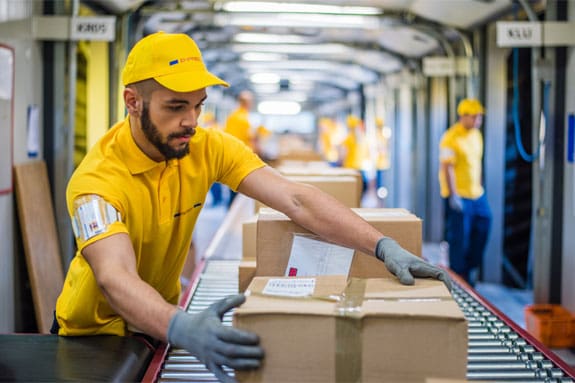The start of the COVID-19 pandemic ushered in a series of abrupt disruptions to global supply chains. Since then, companies have managed the impact of one supply chain disturbance after another with varying degrees of success. Many signs point to continued disruption going forward as a result of a variety of factors, from geopolitical strife and labor actions to clogged seaports and extreme weather. Although the environment in which supply chains operate may not become more stable anytime soon, companies can improve their supply chain response planning to prepare for potential problems and take advantage of new opportunities that will allow them to continue serving their customers’ needs. Best practices and tools for managing ongoing uncertainty are emerging to enable companies to build resilience and, ultimately, to weather the storms of supply chain disruptions.
What Is Response and Supply Planning?
Global supply chains in recent years have had to face a new normal, marked by uncertainty, variable costs and unexpectedly sudden shifts in supply availability and customer demand. Forrester senior analyst Alla Valente described the situation in a November 2022 blog post: “Global supply chains remain in a perpetual state of crisis and are easily disrupted.” Ongoing turbulence will demand greater resilience, adaptability and data-driven decision-making from the teams that manage their organizations’ supply chains. Effective supply chain response planning has emerged as a core competency for companies of all sizes hoping not only to ride the waves of disruption but to continue to perform well and meet customer expectations, despite all the volatility.
In the past, many companies reacted to supply chain upheaval in the moment, but as supply chain shifts and shocks have become more frequent and pronounced, businesses are finding that an ad hoc approach is no longer practical or sustainable. Today’s companies need to develop a more mature, data-driven approach to supply chain response planning that enables them to adapt more quickly and effectively to developing trends and severe disruptions in supply and demand. With greater transparency throughout the supply chain, in tandem with advanced analytics and more dynamic decision-making, companies can arm themselves with the plans and tools they require to react quickly to fluctuations in the environment, protect their profit margins and continue to meet customer expectations.
Key Takeaways
- Companies have long undertaken supply chain planning, but, historically, it was a more static exercise based on steady-state operations.
- Ongoing turbulence in global supply chains demands a more dynamic approach to supply chain response planning to enable greater efficiency, accuracy and speed.
- Modern supply chain response planning demands greater transparency throughout the supply chain, along with new analytics, tools and processes.
- A mature approach to supply chain response planning requires a shift in the mindsets of the teams that manage the process, empowering employees to react to emerging market trends more quickly and effectively.
Supply Chain Response Planning Explained
Supply chain planning is not new. Supply chain managers are quite familiar with mapping out the most effective and cost-efficient methods for sourcing and producing goods, so they can ultimately get the right amount of products into the hands of customers as quickly as possible. Yet, as supply chains have grown more complex, the impact of an issue occurring at any single link in that long, lean supply chain can inflict significant repercussions on the rest of the chain. Supply chains have seen a butterfly effect play out in manufacturing plants, production centers and logistics hubs around the world. For instance, unavailable parts and backordered semiconductors have sometimes brought automaker assembly lines to a halt. At the customer end of the value chain, panic buying of consumer staples at the start of the COVID-19 pandemic led to stockouts of many products, including toilet paper and hand sanitizer.
Planning that takes a business-as-usual approach is no longer enough when it comes to managing a supply chain. To maintain some stability in an uncertain environment, supply chain leaders and managers must make more decisions based on real-time data and intelligence. This requires a significant shift from the typical steady-state supply chain planning of the past.
Because of the distributed and complex nature inherent in sourcing supplies today, several partners in various geographic locations will often have a hand in the supply chain process for a particular product, which can make businesses feel far removed from many pieces of the supply chain puzzle. To get a handle on all of the moving parts and respond quickly to shifting conditions, supply chain decision-makers must harness better tools, gain greater transparency and gather more accurate data about the end-to-end supply chain. All of this information will provide greater insights into both the opportunities and the risks involved in managing the supply chain.
Supply chain response planning — whether short-term or long-term in nature — comes down to using a wide variety of data to create the best plan (or multiple plans) for managing the supply chain. When a company encounters sudden issues in its supply chain, it can rely on response planning — and analyzing data from the current environment to model various approaches — to optimize its operations, given current constraints. To look further ahead, companies might also employ what-if scenario planning and analysis to prepare for impactful changes that may arise in the future.
Modern supply chain response planning can help companies prepare for and address developing operational challenges with greater efficiency, accuracy and speed. The end result is a more dynamic approach that facilitates demand management, enabling businesses to respond quickly to fluctuations in supply and demand to meet customer needs.
Key Supply Chain Issues and Trends
The challenge of balancing supply chain costs and customer needs is not a new one. But the confluence of a number of trends on both the supply and demand sides has added to the difficulty of achieving a profitable middle ground.
Customer expectations are advancing at a quicker rate than ever before, with consumers demanding immediate delivery and instant gratification, as well as low prices. Demand levels can skyrocket or plummet, seemingly on a dime. Each customer in a long global supply chain has another customer farther upstream, compounding the impact of shifts in demand.
The global marketplace in which supply chains operate is more connected, but also more tumultuous. Should one company struggle to manufacture products, due to any number of forces, the effects can ripple throughout the entire supply chain. A conflict on one side of the globe, for example, can pose alarming implications for companies on the other side. This challenging landscape requires organizations to approach their supply chain strategies in a completely new way that involves taking into consideration a variety of circumstances, including some that are beyond their control.
The pandemic highlighted the tremendous impact that these issues can have, illuminating some critical vulnerabilities in modern supply chains. It also lit a fire under companies to advance the practice of supply chain response planning, with a particular focus on increasing transparency and data-driven decision-making. In a marketplace characterized by increased customer expectations, global competition and price pressures, mastering the ability to respond to supply and demand shifts and shocks must become a core competency.
How to Respond to Supply Chain Disruption
One way to respond to supply chain issues is to jump into firefighting mode: taking short-term, reactive action in an attempt to mitigate the brunt of a particular disruption as it arises. A manufacturer may speed up its purchase of supplies to accommodate an urgent need for an increase in production, for example, or an ecommerce retailer might spend more on expedited delivery services to meet a sudden increase in customer demand. These actions will certainly address the emergency at hand, but they may prove costly for the organization in the long run and do little to establish responsiveness and resilience.
In fact, such reactive approaches can even have a negative impact. The so-called bullwhip effect occurs when fluctuations in demand at the retail end of the supply chain cause progressively bigger fluctuations in demand at the wholesale, distributor, manufacturer and raw material supplier levels. This can lead to excess inventory, inaccurate capacity planning, flawed material requirements planning, increased logistics costs, missed production deadlines and a poor customer experience.
A more sustainable approach is to invest in agile and repeatable processes for supply chain response planning. By working in conjunction with other partners in the supply network, the organization will set itself up to better analyze trends and anticipate disruption, enabling it to take action based on real-time information.
Some investments that can enhance an organization’s ability to respond to supply chain disruption include:
- Increased data sharing: The impact of smaller supply chain disruptions quickly magnifies when faced with a lack of visibility across the end-to-end network. Indeed, the vast majority of data and processes in a supply chain often exists outside of one company’s purview. The secure sharing of data among supply chain partners can minimize the effects of disruption occurring at any link in the supply chain.
- Scenario planning and simulation: By exploring likely types of supply chain disruptions, companies can prepare for and practice effective responses. One approach is building and testing what-if scenarios, prioritizing those aspects of the supply chain that are most likely to be disrupted. Then, companies can set up controls to minimize the consequences of these disruptions. Key areas to explore include risks in supplier networks, labor, manufacturing and logistics. In many cases, these ongoing exercises can expose critical vulnerabilities, allowing companies to plan ahead to avoid problems. For example, a company might allow extra time for delivery whenever its supply is likely to be constrained. Similarly, if a logistics issue is looming, a company might arrange to shift excess capacity to alternate routes by using railways instead of seaports, for example.
- Implementing a supply chain control tower: A supply chain control tower is a central, connected dashboard of real-time supply chain data that serves as a kind of nerve center for monitoring the supply network and coordinating proactive and real-time responses to disruption. In addition to the tower itself, companies often designate a cross-functional team to establish processes and benchmarks that will help identify emerging supply chain trends and anomalies. Companies can then manage responses to any number of disruptions, from cyberthreats and weather events to geopolitical turmoil and supplier performance issues. An effective supply chain control tower offers end-to-end visibility across the supply chain; leverages advanced technologies, such as artificial intelligence (AI), to analyze incoming data; and provides actionable insights.
- Reevaluating lean approaches: While a just-in-time inventory strategy can be a cost-effective approach in certain circumstances, it can also increase the likelihood of supply chain disruptions. Lack of inventory can prove problematic, particularly in situations where entire regions or sources of supply are affected, which is exactly what occurred during the pandemic. Analyzing and categorizing suppliers, with an emphasis on their importance to business performance, is a good first step. Then, companies can mitigate their risks by recalculating inventory targets, investing in more safety stock, situating inventory supplies closer to customers, identifying alternate suppliers and redesigning networks.
- Designating a resilience team: Granted, the supply chain control tower approach helps with emergent issues, but organizations can further benefit from creating a team devoted to increasing long-term supply chain agility and resilience. Freeing this team from having to handle day-to-day issues can empower employees to plan more fundamental changes related to managing the company’s supply chain.
Supply Response Planning Importance
Shocks in both supply and demand dominated the headlines in the wake of the COVID-19 pandemic. The ongoing turbulence made clear the impact that a lack of effective supply chain planning and response can wreak on companies, industries and even entire economies.
Supply chain disruption costs large companies an average of $182 million a year — or 1.74% of their annual revenue, according to a 2022 report by Interos. The collateral damage is spread evenly across many types of disruption: an average of $42 million on financial issues, for instance, when a key supplier goes bankrupt; $41 million for operational disruptions, for example, from a natural disaster; $37 million on cyber-related disruptions; and $35 million for environmental risks, such as having to pay fines for breaching human rights laws at a factory. Just as alarming, McKinsey calculated that, over the course of this decade, companies could face supply chain disruptions resulting in losses of nearly 45% of their annual profits. One prolonged shock to production could erase 30% to 50% of annual earnings before interests, taxes and depreciation, McKinsey estimated.
Experts say it’s not a question of if, but when the next disruption will hit supply chains. Geopolitical turmoil, trade wars, natural disasters, climate crises and future pandemics all loom large on the horizon. When combined with rapidly changing customer demands, the value of investing in more robust and data-driven supply chain response planning becomes clear. Most company leaders recognize the need to improve their ability to respond quickly and intelligently to both expected and unexpected shifts in their supply networks in order to remain competitive. This requires investing in the data, tools, people and processes that can enable smarter strategic, tactical and operational responses.
Challenges in Supply Response Planning
Knowing what needs to be done to manage a supply chain is one thing, but determining how to proceed is another. Balancing supply and demand is a practice as old as trade itself, but today’s marketplace has become much more complex, creating challenges for companies trying to develop a solid plan. Among the key hurdles confronting companies seeking to improve their supply chain response planning are:
- Unrelenting risk and volatility. Companies face several supply chain risks in today’s volatile market, from cybersecurity attacks, international conflicts and global health crises to weather events, labor strikes and talent shortages, all of which can wreak havoc on global supply chains. These risks make supply chains more difficult than ever to manage, so many companies today are investing in robust supply response planning to rethink their entire supply networks, better understand their weaknesses and bolster their resilience.
- Increased supply chain complexity. Today, supply networks for many companies are less linear chains of handoffs and more complex webs of interdependencies. This creates a challenge, first, in understanding what’s going on within that network in real time, and second, in making quick, substantive changes in response. However, modern enterprises can benefit from the availability of more advanced technology and tools for sharing data, analyzing opportunities and predicting potential glitches.
- Siloed systems, processes and decision-making. Better supply chain response planning requires businesses to visualize all activities within the supply chain, make decisions and take action — speedily. Any internal barriers — lack of data, nonintegrated systems, disjointed functions, inadequate decision-making — can thwart the company’s ability to respond in a swift and agile way. Effective supply chain response planning and execution must cut across silos and organizational barriers.
- Cost pressures. One of the biggest hurdles to investing in better supply chain response planning is the razor-thin margins that exist in many supply chains. For years, companies have worked to reduce costs in their supply chains, sometimes to the detriment of resilience. Some companies may be willing, in the moment, to throw cash at a supply chain emergency; but if they were to pause to evaluate the situation more fundamentally, they’d see that rethinking supply chain response planning requires the willingness to budget for more long-term solutions that may not pay off until much later.
- Environmental impact and sustainability. As companies commit to specific environmental, social and governance (ESG) goals, they must consider how their supply chains affect their environmental stewardship and social responsibility aims. Since supply chains are often responsible for an outsized portion of a company’s ESG impact, sustainability concerns must be integrated into the supply chain response planning process.
Response and Supply Planning Process
Supply chain response planning generally seeks to increase visibility, assess supply chain vulnerabilities and make plans for how to respond to potential problems, large or small. Issues may arise at any point, from the supplier of raw materials at one end of the chain to the customer at the other. Because the overarching aim at every step is to keep supplies moving and meet customer demand, the planning approach can vary significantly, depending on what types of risks the organization is seeking to mitigate.
It can be helpful to break down supply chain response planning in terms of time horizons: long-term, midterm and short-term.
Long-Term Planning
This type of strategic supply chain response planning seeks to illuminate both opportunities and risks farther out on the horizon, say, in future quarters or upcoming fiscal years. Long-term supply chain response planning typically involves gathering information from various departments across the business, including manufacturing, finance, logistics, sales, marketing and cybersecurity. The focus is on analyzing complex datasets, performing what-if scenario simulations and developing plans to create various future contingencies. End-to-end visibility into the supply networks is critical, and many companies take advantage of modern technologies, including advanced analytics, AI and machine learning, to assist with the process. The goal is to integrate risk management and response into operational protocols, and build a more responsive and resilient supply chain over the long haul.
Midterm Planning
This more operationally focused midterm supply chain response planning stage is where the rubber of longer-term planning meets the road of execution. At this phase, companies manage inventory planning, supply channels, logistics capacities and other hands-on activities, comparing projections and benchmarks to the current state of the chain. This helps highlight emerging bottlenecks and other potential disruptions, so companies can respond with the strategies they developed during long-term planning. An anticipated rail labor strike, for example, may mean a company will need to activate its backup capacity with road-shipping partners.
Short-Term Planning
This stage of response planning is often more consumer-focused, with an eye toward responding to customer demand as effectively and efficiently as possible. If supply chain leaders see that demand is trending sharply upward (or downward), they will need to decide on response solutions immediately, often that same day. Advanced analytics play a leading role in short-term supply chain response planning and execution, as decision-makers must determine which solutions they can deploy without taking an eye off their profit margins.
Response and Supply Planning Tools
To implement effective supply chain response planning to manage today’s complex sources of supply and prevent disruptions, companies need adequately networked solutions. First, companies require increased visibility in the form of clean, accurate data at every step of their supply chains, as well as the ability to analyze that data in a timely manner. Ultimately, they also must be able to share the insights that result from that analysis in a user-friendly and actionable format that is accessible to stakeholders across the organization’s functions.
The good news is that advanced technologies are available to enable more effective supply chain response planning and execution. Several capabilities, including cloud infrastructure and real-time analytics enabled by AI and machine learning, make it possible for businesses to analyze large, distributed datasets, both across a company’s departments and among its many supply chain partners. In fact, a Gartner survey of supply chain leaders that was released in April 2022 shows that emerging and maturing supply chain technology will be a major source of competitive advantage for companies in the next few years, with 60% of respondents saying technology is a major differentiator today. Businesses are especially focusing on integrating supply chain technologies, upgrading legacy systems to accommodate modern workloads, and investing in tools that aid in human decision-making.
With the right data and analytics approach, companies can build a solid foundation for their supply chains, paving the way for a smooth response to a wide variety of market conditions. Relying on a single source of truth through real-time visibility into the entire supply chain process is the cornerstone of these efforts. As advancements in AI and machine learning capabilities continue to grow, companies can take advantage of predictive insights that allow them to peek around corners and anticipate future issues. By 2026, more than three-quarters of supply chain management application vendors will deliver embedded analytics, AI and data science capabilities in their offerings, according to a Gartner prediction.
These advanced technologies help empower companies to perform the kind of scenario planning and what-if analysis needed in today’s business environment. For example, a company may invest in building a digital twin(opens in a new tab), a virtual replica of some portion of its operation that allows supply chain leaders to simulate how a process will perform under various conditions and constraints. Another approach is to model a variety of what-if scenarios to decide on the responses that correct potential problems in the most efficient and effective ways. In both approaches, machine learning is essential to performing predictive modeling based on complex datasets and making recommendations for how to respond to various conditions.
Looking forward, companies will conduct more analysis at the source of data — produced by connected machines, devices and sensors within the supply chain network — thanks to advances in communications networking like Wi-Fi, Bluetooth and 5G networks. These solutions reduce lag time, supporting real-time intelligence and action. Some organizations will also find value in creating supply chain control towers to act as centers of excellence for managing real-time supply chain responses.
Adjust in Real Time to Supply Chain Issues With NetSuite
The right supply chain management solution can make a world of difference in ensuring that a company is able to anticipate and respond to disruption in its increasingly elaborate supply networks. To continually develop and refine their supply chain response efforts, companies need planning tools that can leverage advanced analytics and optimization algorithms. NetSuite Supply Chain Planning offers a number of sophisticated capabilities to help businesses balance both supply and demand. Inventory management and demand planning functionality, combined with a scheduling engine and AI-powered predictive analytics, equip supply chain leaders to perform data-informed supply chain response planning.
The software can generate a recommended schedule for purchasing or manufacturing items, and suggest purchase and work orders based on lead times and expected demand. Armed with effective supply chain response planning tools, like NetSuite Supply Planning, businesses can keep their product development and delivery processes running smoothly, even in the face of supply chain challenges, ensuring material availability and accurate production scheduling.
NetSuite’s supply chain control tower tool is specifically designed for supply chain response planning. Companies can use the module to simulate inventory supply and demand across their supply chain network, helping logistics teams analyze capacity and operations teams plan purchases and production schedules. The simulation displays a running balance of inventory, based on sales orders and future stock levels, and it illustrates how changes to the bill of materials or production processes will impact the business. Using the embedded predictive risk functionality, planners can explore how various responses will affect processes.
Greater visibility into key supply chain data, visualization of how all the moving parts affect one another and advanced analytics to identify emerging resource issues help companies respond to current supply chain dynamics. With the right tools, companies can determine the quickest and most profitable solutions to address problems.
The challenges of managing a variety of networks in today’s dynamic supply chain era is a tall order. Companies must focus not only on repairing supply chain problems in the moment, but also on looking ahead and preparing to respond to a broad range of future opportunities and risks. For most companies, this requires a digital transformation of supply chain management with a focus on response planning. Of course, this is tantamount to working on an airplane while it’s midflight.
Still, it’s clear that in a marketplace defined by ongoing disruptive events, investing the time and effort to improve supply chain response capabilities has become a competitive necessity. Companies that rethink their networks of supply, and their supply chain response processes and technologies — with an eye toward increasing visibility, integrating advanced analytics and providing actionable insights to key decision-makers — will be able to build effective, adaptive and resilient supply chains.
Award Winning
Cloud Inventory
Supply Chain Response Planning FAQs
What is supply chain response?
Supply chain response refers to the way a company addresses constraints or disruptions in its supply networks. Though reactive responses to supply chain disturbances may sometimes be necessary, an ad hoc approach is not sustainable or scalable. With experts predicting that supply chain shifts and shocks will become more frequent and pronounced, companies should instead develop mature, data-driven approaches to supply chain response planning that enable them to adapt more quickly and effectively to changes. Armed with greater access to data, advanced analytics capabilities and more dynamic decision-making processes, companies can anticipate changes in the environment, meet customer expectations and maintain their profit margins.
What is responsive supply chain management?
Companies with responsive supply chain capabilities are prepared for potential issues that may emerge in their supply chain operations. In contrast to planning for steady-state supply chain operations in a business-as-usual environment, supply chain response planning uses data-based insights to create plans for effectively managing the supply chain under various conditions. An effective supply chain response planning approach allows the business to analyze data from the current environment, model various approaches, identify risks and pursue opportunities under specific constraints. In the best-case scenario, businesses will perform this kind of planning before having to deal with a sudden supply chain challenge. Responsive supply chain management processes and tools can also be used to manage acute issues and unforeseen disruption.
What are the supply chain response strategies?
The goals of supply chain response strategies are to increase visibility, assess supply chain vulnerabilities and make plans for how to respond to potential problems. Supply chain disruption may occur anywhere within the network, from the supplier of raw materials to the customer purchasing a product. Thus, the approach will vary depending on what types of disruptions or risks the organization is seeking to avoid. Supply chain response planning is often structured in terms of time horizons:
- Long-term planning involves identifying and planning for future risks.
- Midterm planning is how an organization executes its long-term strategy as risks emerge.
- Short-term planning refers to more immediate responses to acute shifts in customer demand or other changes.
Some actions that enhance an organization’s ability to respond to supply chain disruption include:
- Increasing data sharing with supply chain partners.
- Using advanced analytics and AI to anticipate and respond to supply chain disruption.
- Scenario planning and simulation to explore potential solutions to supply chain challenges.
- Implementing a supply chain control tower to monitor data and coordinate real-time responses.
- Creating a supply chain response and resilience team.
- Reevaluating supply chain design to mitigate risks.
What are the 5 Rs of supply chain management?
The 5 Rs of supply chain management focus on delivering the right product, in the right quantity, at the right place, at the right time and at the right cost to meet customer demand and satisfaction.
What is a supply chain control tower?
An effective supply chain control tower gives a company end-to-end visibility across the supply chain, often leveraging advanced technologies, such as AI, to analyze incoming data and provide actionable insights. This central dashboard serves up real-time supply chain data and acts as a nerve center supply chain professionals can use to monitor the supply network and coordinate both proactive and real-time responses to disruption. To make the most effective use of this insight, many companies will create a cross-functional team to manage the supply chain control tower. Ideally, these teams will establish benchmarks that identify emerging supply chain trends, anomalies and any other deviations from the status quo. They can also put in place repeatable processes to manage responses to any number of disruptions, from financial troubles among suppliers to geopolitical turmoil.









